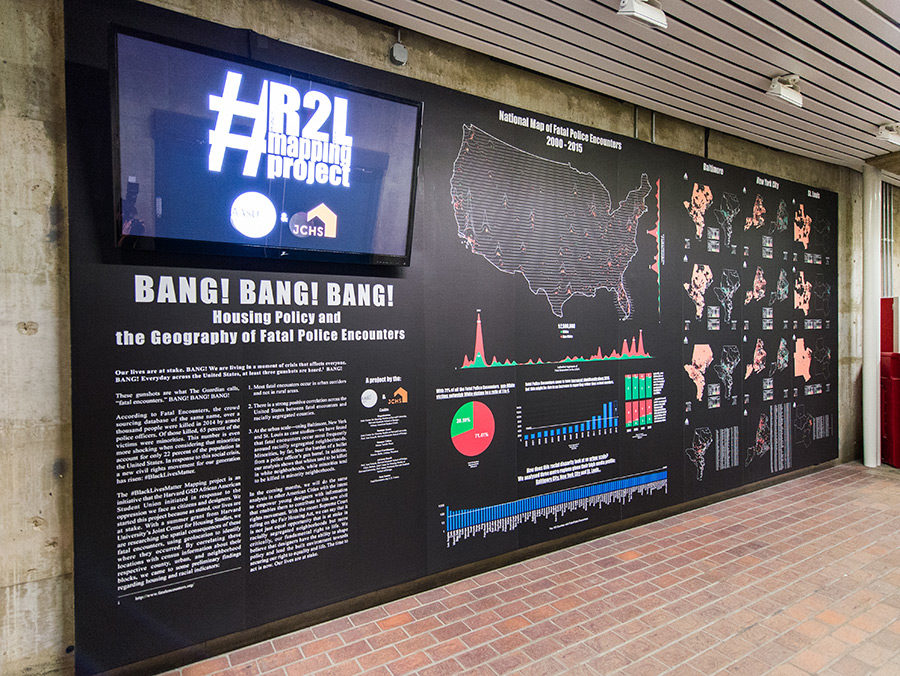BANG! BANG! BANG! Housing Policy and the Geography of Fatal Police Encounters

Our lives are at stake. BANG! We are living in a moment of crisis that affects everyone. BANG! Everyday across the United States, at least three gunshots are heard. BANG!
These gunshots are what The Guardian calls, “fatal encounters.” BANG! BANG! BANG!
According to Fatal Encounters, the crowd sourcing database of the same name, over a thousand people were killed in 2014 by armed police officers. Of those killed, 65 percent of the victims were minorities. This number is even more shocking when considering that minorities account for only 22 percent of the population in the United States. In response to this social crisis, a new civil rights movement for our generation has risen: #BlackLivesMatter.
The #BlackLivesMatter Mapping project is an initiative that the Harvard GSD African American Student Union initiated in response to the oppression we face as citizens and designers. We started this project because as stated, our lives are at stake. With a summer grant from Harvard University’s Joint Center for Housing Studies, we are researching the spatial consequences of these fatal encounters, using geolocation to identify where they occurred. By correlating these locations with census information about their respective county, urban, and neighborhood blocks, we came to some preliminary findings regarding housing and racial indicators:
1. Most fatal encounters occur in urban corridors and not in rural areas.
2. There is a strong positive correlation across the United States between fatal encounters and racially segregated counties.
3. At the urban scale—using Baltimore, New York and St. Louis as case studies—we have found that fatal encounters occur most frequently around racially segregated neighborhoods. Minorities, by far, bear the burden of a bullet from a police officer’s gun barrel. In addition, our analysis shows that whites tend to be killed in white neighborhoods, while minorities tend to be killed in minority neighborhoods.
In the coming months, we will do the same analysis in other American Cities with the intent to empower young designers with information that enables them to contribute to this new civil rights movement. With the recent Supreme Court ruling on the Fair Housing Act, we can say that it is not just equal opportunity that is at stake in racially segregated neighborhoods but more critically, our fundamental right to life. We believe that designers have the ability to shape policy and lead the built environment towards securing our right to equality and life. The time to act is now. Our lives are at stake.
A project by the: African-American Student Union (AASU) and The Joint Center for Housing Studies (JCHS)
Summer Grant:
Joint Center for Housing Studies at Harvard University,
Prof. Ann Forsyth, Harvard Graduate School of Design
Summer Fellow:
Héctor Tarrido Picart
Project Coordinators:
Marcus Mello, Lindsay Woodson
Advisory Board:
Prof. Ann Forsyth, Harvard Graduate School of Design;
Chris Herbert, Joint Center for Housing Studies at Harvard University; Prof. James Stockard, Harvard Graduate School of Design.
Data Source:
Fatal Encounters.org, U.S. Census